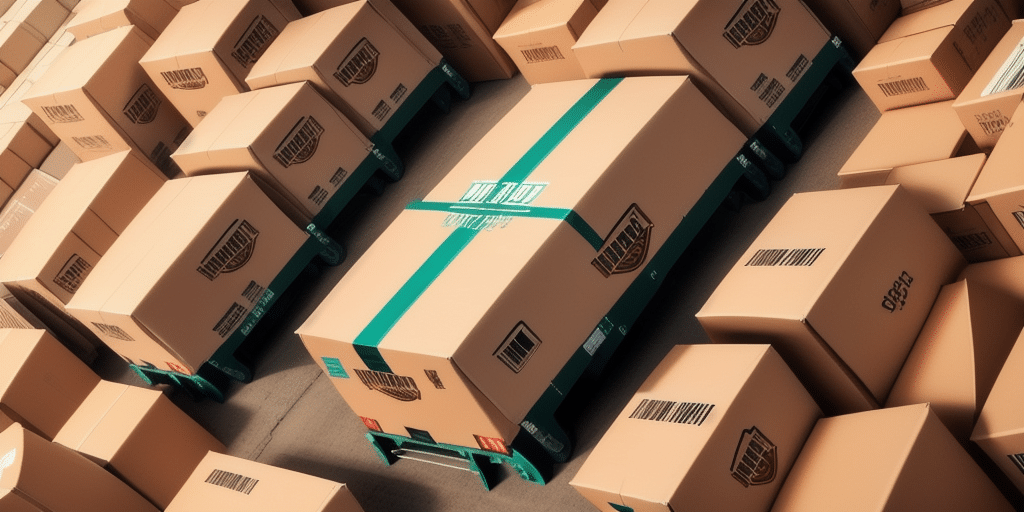Enhance Your eCommerce Shipping with UPS WorldShip and Shopify Integration
With the rise of eCommerce, efficient shipping has become a critical factor in the success of online businesses. One effective way to optimize your shipping process is by integrating your Shopify store with UPS WorldShip. This comprehensive guide provides a step-by-step approach to integrating UPS WorldShip with Shopify, detailing the benefits, requirements, installation, configuration, testing, and best practices to ensure a seamless shipping experience. Let's dive in.
Understanding UPS WorldShip and Shopify
What is UPS WorldShip?
UPS WorldShip is a robust shipping software designed to simplify and streamline the shipping process for businesses of all sizes. It enables users to manage orders, create shipping labels, and track packages efficiently. With features like address validation, automatic rate calculation, and scheduled pickups, UPS WorldShip integrates seamlessly with other UPS tools, such as Quantum View, offering enhanced visibility and control over shipments. According to UPS, businesses that utilize UPS WorldShip can increase shipping efficiency by up to 40% [source].
What is Shopify?
Shopify is a leading eCommerce platform that provides businesses with the tools to create and manage online stores. It offers a user-friendly interface, customizable templates, and a vast app ecosystem, enabling users to design their website, manage products, process orders, and handle payments all in one place. As of 2023, Shopify powers over 1.75 million businesses worldwide [Shopify Reports], making it a preferred choice for many online retailers.
Benefits of Integrating UPS WorldShip with Shopify
Streamlined Order Fulfillment
Integrating UPS WorldShip with Shopify automates the order fulfillment process by syncing orders directly from your Shopify store to WorldShip. This eliminates the need for manual data entry, reducing errors and saving valuable time. Businesses have reported up to a 50% reduction in processing time after implementing this integration [source].
Customized Shipping Options
The integration allows for the creation of custom shipping rates and rules tailored to your business needs. For instance, you can offer free shipping on orders over a certain amount or add extra charges for expedited shipping. This flexibility not only improves customer satisfaction by providing more shipping choices but also helps in managing shipping costs effectively.
Enhanced Customer Service
With real-time tracking and automatic updates, integrating UPS WorldShip with Shopify allows customers to receive accurate and timely information about their orders. Features like address validation and shipment insurance further ensure that packages are delivered correctly and safely, enhancing the overall customer experience.
Key Benefits
- Efficiency: Automated syncing of orders reduces manual work and errors.
- Flexibility: Custom shipping rates and options cater to diverse business needs.
- Customer Satisfaction: Real-time tracking and reliable delivery enhance trust.
- Cost Savings: Access to discounted shipping rates helps lower operational costs.
Requirements for Integrating UPS WorldShip with Shopify
Before you begin the integration process, ensure that you meet the following requirements:
- A valid UPS account with a WorldShip subscription.
- A Shopify account with at least the Advanced Shopify plan (Shopify Pricing).
- The UPS WorldShip plugin for Shopify.
- A stable internet connection.
Additionally, your UPS account must be configured to allow API access. Contact UPS customer support to request API access if it's not already enabled.
While the integration process is manageable, having some technical knowledge of APIs or consulting with a developer can facilitate a smoother setup.
Step-by-Step Integration Guide
1. Setting Up Your UPS WorldShip Account
- Visit the UPS website and create an account if you don't already have one.
- Subscribe to the WorldShip service that best fits your business needs.
- Download and install the WorldShip software on your computer from the UPS website.
- Launch the WorldShip application and configure your account settings, including default shipping preferences such as package weight, dimensions, and preferred carriers.
- Regularly update the WorldShip software to access the latest features and security updates.
2. Installing the UPS WorldShip Plugin in Shopify
- Log in to your Shopify account and navigate to the Shopify App Store.
- Search for the "UPS WorldShip" app and install it.
- Follow the on-screen prompts to connect your UPS WorldShip account with your Shopify store.
- Configure your shipping settings within the app to match your business requirements, including setting up shipping zones and rates.
3. Configuring Integration Settings
- Customize shipping rates based on weight, price, or flat rates to provide flexible options for customers.
- Define shipping zones to specify regions or countries where you ship products.
- Establish shipping rules, such as free shipping for orders over a specific amount or additional fees for expedited shipping.
- Set up insurance options to protect shipments against loss or damage.
After configuring the settings, conduct thorough testing to ensure accurate functionality.
4. Testing the Integration
- Place test orders to verify that they are correctly imported into UPS WorldShip.
- Ensure that shipping labels are generated accurately with the correct information.
- Check that tracking codes are updated in Shopify once the package is shipped.
Testing should be performed in a controlled environment to prevent disruptions to your live store. Address any issues identified during testing by consulting with Shopify or UPS WorldShip support.
Troubleshooting Common Integration Issues
- Order Import Failures: Verify that your API key is correctly entered in the plugin settings and that your UPS account has API access enabled.
- Shipping Label Errors: Check that all package and shipping information is accurate and complete in the order details.
- Tracking Updates Not Reflecting: Ensure that the order status is marked as shipped within the WorldShip software to trigger tracking updates in Shopify.
If persistent issues occur, contact the support teams for Shopify or UPS WorldShip for further assistance.
Best Practices for Optimizing Integration
- Regular Testing: Continuously test the integration to identify and resolve any new issues promptly.
- Update Shipping Options: Regularly review and update your shipping rates and options to stay competitive and meet customer expectations.
- Monitor Shipping Metrics: Utilize WorldShip's reporting tools to analyze shipping performance metrics and identify areas for improvement.
- Maintain Software Updates: Keep both Shopify and UPS WorldShip software up to date to leverage new features and security enhancements.
- Provide Clear Communication: Ensure that customers receive timely updates and accurate tracking information to enhance their shopping experience.
Conclusion: Streamlining Your eCommerce Shipping Process
Integrating UPS WorldShip with Shopify offers a powerful solution for optimizing your eCommerce shipping operations. By automating order fulfillment, customizing shipping options, and enhancing customer service, this integration can significantly contribute to your business's efficiency and customer satisfaction. Follow the outlined steps and best practices to create a seamless shipping experience for your customers and ensure the continued success of your online business.






















